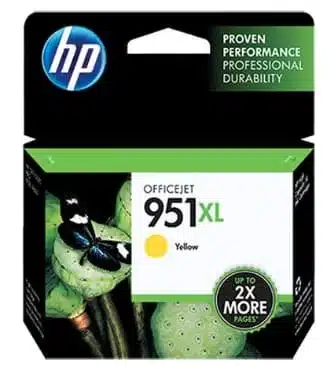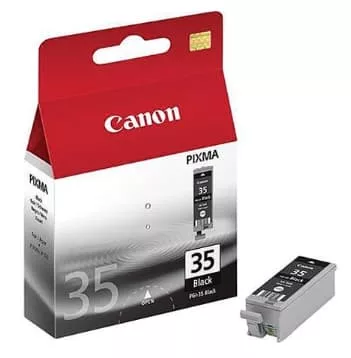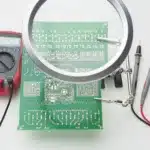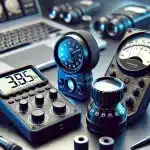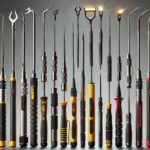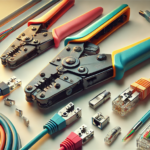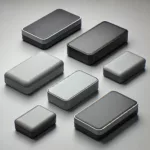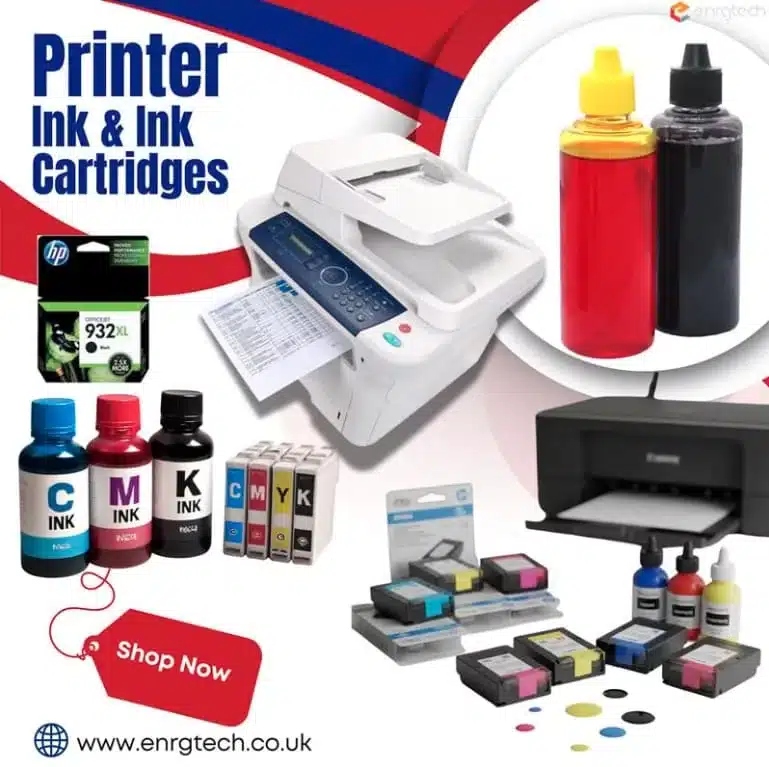
Introduction
The simple act of buying printer ink often turns into a confusing and surprisingly expensive endeavour. With a market saturated with different ink and cartridge types, yields, and manufacturers, knowing how to find the best balance of quality and cost is essential. Choosing the correct ink or cartridge isn’t just about getting the job done—it’s about ensuring reliable output, consistent quality and optimised cost per page. This guide covers everything you should consider when selecting printer ink and cartridges, showing how and where to find the best models for your needs.
Understanding Printer Ink and Ink Cartridges: Definition & Core Difference
Printer ink refers to the liquid designed to produce text and images on paper in inkjet printers. It is typically composed of water, pigments, and other chemicals to ensure proper flow and colour consistency. Ink cartridges, on the other hand, are the physical containers that hold the ink in the printer. They house the ink and include a print head that delivers it to the paper. The key difference between ink and ink cartridges is that ink is the substance used for printing, while ink cartridges are the physical components that store and manage the ink supply in the printer.
How Many Types of Printer Ink Are There?
The main types of printer ink fall into two broad categories based on the technology they use. They are also classified into various variants based on their colours. One type is liquid ink used in inkjet printers, and the other is a dry powder used in laser printers. Within liquid inkjet ink, the two major subtypes are dye-based and pigment-based. Dye-based inks are used in inkjet printers, known for their high-quality photo prints and vibrant colour outputs. Pigment-based inks contain solid pigments suspended in liquid and are more durable and waterproof than dye-based inks. Hybrid inks are also available that combine the properties of both dye-based and pigment-based inks. Additionally, specialised inks or multicolour inks also exist that achieve superior detail and professional results.
Understanding Ink Cartridge Types: OEM vs. Compatible vs. Remanufactured
Ink cartridges come in three primary types: OEM (Original Equipment Manufacturer), compatible, and remanufactured. Understanding these variants helps consumers make informed decisions based on their cost, quality, and sustainability preferences. Let’s find the difference:
OEM Cartridges: These cartridges are made by the same company as the printer. They offer guaranteed compatibility and the highest quality and reliability; however, they are expensive.
Compatible Cartridges: These are brand-new cartridges manufactured by a third party. They are designed to meet the specifications of the original printer models. Compatible models provide significant cost savings, though quality can sometimes vary between brands.
Remanufactured Cartridges: As the name suggests, remanufactured cartridges are used original OEM cartridges that have been professionally cleaned, refilled with ink, and tested. These recycled cartridges are a cost-effective option and can save you significant money for everyday printing.
Standard vs. High Yield Cartridges: What’s the Difference?
Both standard and high-yield cartridges primarily differ in their page yield—the estimated number of pages they can print. Standard cartridges are the most commonly used, which typically print fewer pages before needing replacement. They are suitable for low to moderate print volumes and are usually less expensive. However, standard models are less economical for heavy users. On the other hand, high-yield cartridges are designed to produce a larger number of prints, making them a better choice for high-volume printing. Though they cost more initially, their cost-per-page is lower, offering greater value over time for businesses or individuals who print frequently.
Factors to Consider When Choosing Printer Ink and Cartridges
When selecting printer ink and cartridges for your business or office, it’s essential to assess multiple technical and operational factors, as given below:
- Printer/ Cartridge Compatibility
- Print Volume and Page Yield
- Ink Colour and Quality
- Cartridge Manufacturer Type
- Budget and Brand
- Long-term Usage, Storage, and Maintenance.
Where to Buy Printer Ink and Cartridges?
There are several places to buy printer ink and cartridges, including online stores, office supply stores, and directly from the printer manufacturers. Multiple online websites, like Amazon, eBay, and Enrgtech, as well as specialised websites, offer competitive prices. Major big-box retailers and reliable online sources provide a wide variety of options from reputable brands like HP, Epson, and Canon. For bulk or business usage, trusted e-commerce platforms are available that offer original cartridges. Buying directly from the manufacturer’s website guarantees compatibility with your printer and often provides access to additional services, such as warranties and customer support.
Final Thoughts
Selecting the right ink or ink cartridge is a strategic decision that influences print quality, operational cost, supplier reliability and waste management. Understanding the basic differences between inks and cartridges, and considering various factors, can help you pick the best one for your printer. With numerous sources available—from online retailers to local stores—buyers can find the best deals and ensure they get high-quality ink and cartridges for their printing needs.






